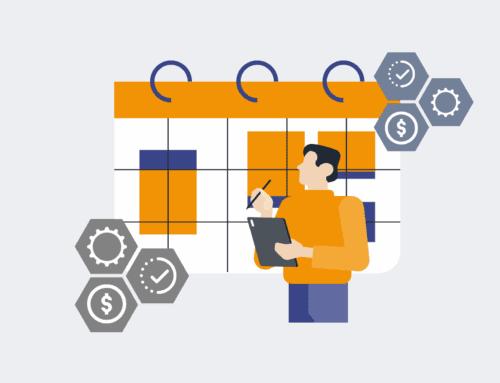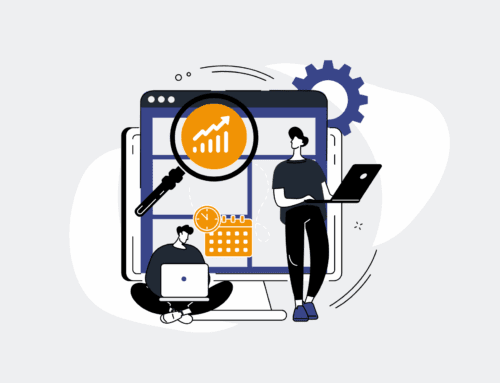Securing Budget for Keap: Crafting an Unassailable ROI Proposal
In today’s competitive business landscape, every investment dollar is scrutinized. For growth-oriented companies, the decision to adopt or expand powerful automation platforms like Keap isn’t just about selecting the right software; it’s about making a compelling case for its value. Many business leaders understand the inherent benefits of automation—streamlined processes, enhanced customer engagement, and improved efficiency—yet struggle to articulate these in a way that resonates with budget holders. The challenge isn’t merely to state what Keap does, but to demonstrate the tangible return it delivers, transforming it from a line item expense into a strategic imperative.
The Hidden Costs of Inaction: Why Keap Isn’t Just a “Nice-to-Have”
Before presenting a robust ROI proposal for Keap, it’s crucial to understand the often-overlooked costs associated with maintaining the status quo. These are the inefficiencies and missed opportunities that drain resources daily. Manual processes, fragmented communication, inconsistent lead nurturing, and a lack of unified data all contribute to a significant drag on productivity and profitability. For high-growth B2B companies, these inefficiencies aren’t just minor irritations; they are fundamental bottlenecks preventing scalability and stifling potential revenue. The Keap platform is designed to address these core issues, consolidating CRM, marketing automation, and sales automation into a cohesive system. The true cost of not investing in Keap isn’t just the absence of its benefits, but the compounding effect of continued operational friction.
Unpacking Keap’s Core Value Drivers for a Powerful ROI
Crafting an unassailable ROI proposal for Keap requires moving beyond generic benefits and delving into specific, quantifiable impacts across various departments. Our experience at 4Spot Consulting, helping companies implement robust automation strategies with tools like Keap, has shown us that its most powerful value drivers typically fall into three key areas: cost reduction through efficiency, revenue generation through enhanced customer journeys, and risk mitigation through improved data management.
1. Cost Reduction Through Operational Efficiency
One of the most immediate and quantifiable benefits of Keap lies in its ability to automate repetitive, time-consuming tasks. Consider the hours spent manually managing leads, scheduling follow-ups, sending recurring emails, or onboarding new clients. Each of these tasks, when automated, frees up high-value employees to focus on strategic initiatives rather than low-value administrative work. For instance, an automated lead nurturing sequence in Keap can engage prospects around the clock, reducing the need for manual outreach and ensuring no lead falls through the cracks. Similarly, automating client onboarding processes can cut down administrative time significantly, leading to quicker client activation and reducing the burden on support staff. By meticulously documenting the current manual processes and estimating the time savings generated by Keap’s automation features, you can build a compelling case for reduced operational costs and increased output per employee.
2. Revenue Generation and Accelerated Growth
Beyond saving money, Keap is a potent engine for driving new revenue. Its integrated CRM ensures a single source of truth for customer data, enabling highly personalized marketing campaigns that convert more effectively. Automated sales pipelines ensure timely follow-ups, reducing sales cycles and increasing close rates. Imagine a scenario where a prospect downloads a resource from your website; Keap can immediately trigger a series of personalized emails, assign them to the appropriate sales representative, and even notify the rep when the prospect revisits key pages. This proactive and personalized approach dramatically improves the chances of conversion compared to generic, one-size-fits-all communication. Quantifying this involves projecting increases in lead conversion rates, average deal size, or customer lifetime value resulting from improved engagement and sales efficiency.
3. Risk Mitigation and Enhanced Scalability
While often harder to quantify directly, the benefits of risk mitigation and enhanced scalability are critical for long-term growth. Keap’s ability to centralize customer data reduces the risk of human error and data silos, ensuring consistent communication and compliance. For businesses experiencing rapid growth, manual processes quickly become bottlenecks, making scaling difficult and expensive. Keap provides the infrastructure to handle increased volume without a proportional increase in headcount or administrative burden. By demonstrating how Keap enables your business to grow without breaking, you underscore its strategic importance for future resilience and expansion. This is where an OpsMesh™ approach to connecting various systems, with Keap at its core, can deliver monumental value.
Building Your Keap ROI Proposal: A Step-by-Step Approach
To craft a budget proposal that stands out, begin with a thorough audit of your current processes. Identify pain points, bottlenecks, and areas where human error is prevalent. Then, map these against specific Keap features and functionalities, quantifying the potential time savings, efficiency gains, and revenue uplift. Don’t just list features; connect them directly to business outcomes. For example, instead of saying “Keap offers email automation,” say “Keap’s email automation will reduce the time spent on manual follow-ups by X hours per week, allowing our sales team to pursue Y more qualified leads, projected to increase revenue by Z%.”
Include testimonials or case studies where possible, even if they are internal ‘mini-successes’ from pilot programs. Project both direct and indirect benefits, showing a comprehensive understanding of Keap’s impact. Ultimately, a compelling ROI proposal for Keap isn’t just about justifying a cost; it’s about painting a clear picture of the future state of your business—more efficient, more profitable, and infinitely more scalable—all made possible by strategic automation.
If you would like to read more, we recommend this article: The Keap Automation ROI Calculator: From Justification to Transformative HR









